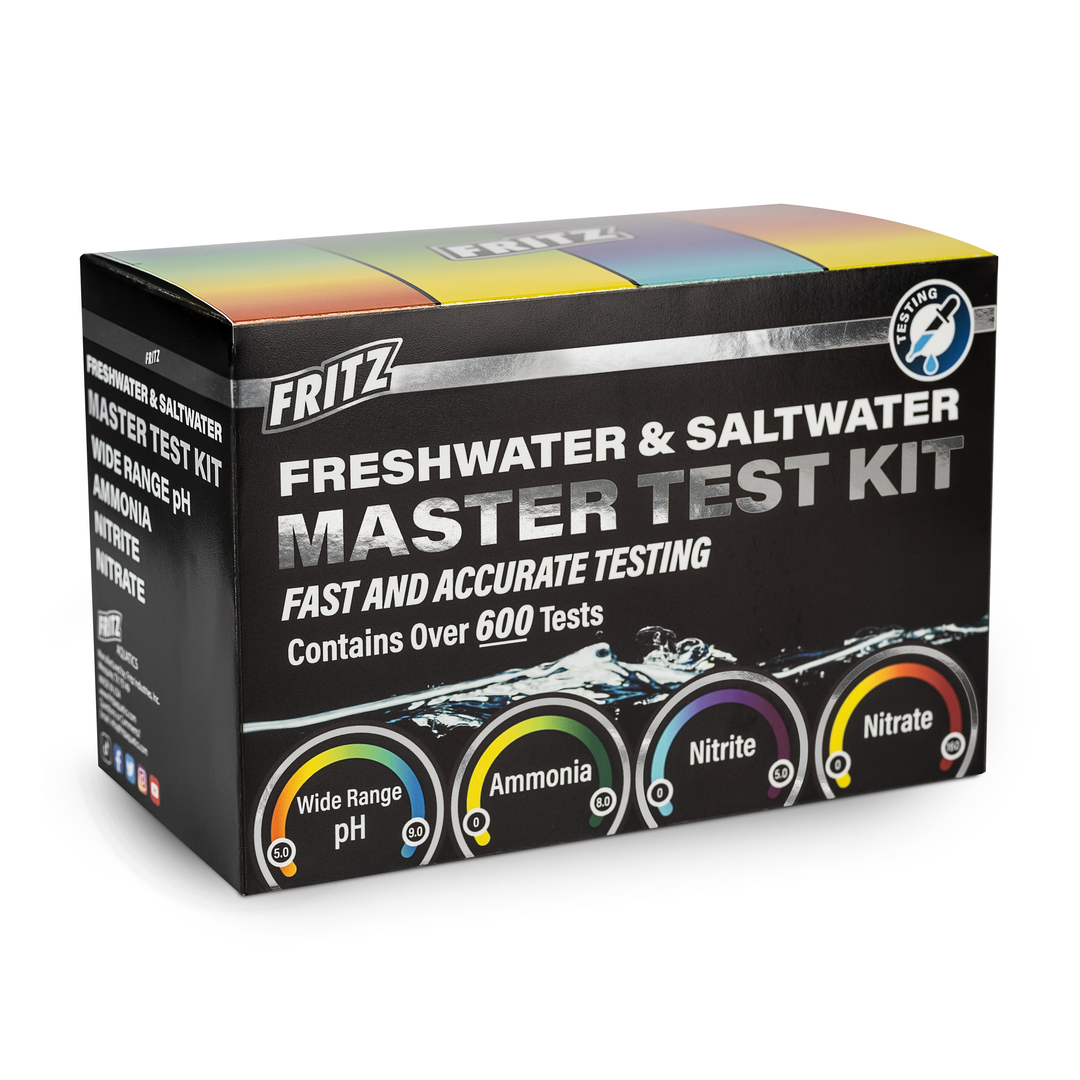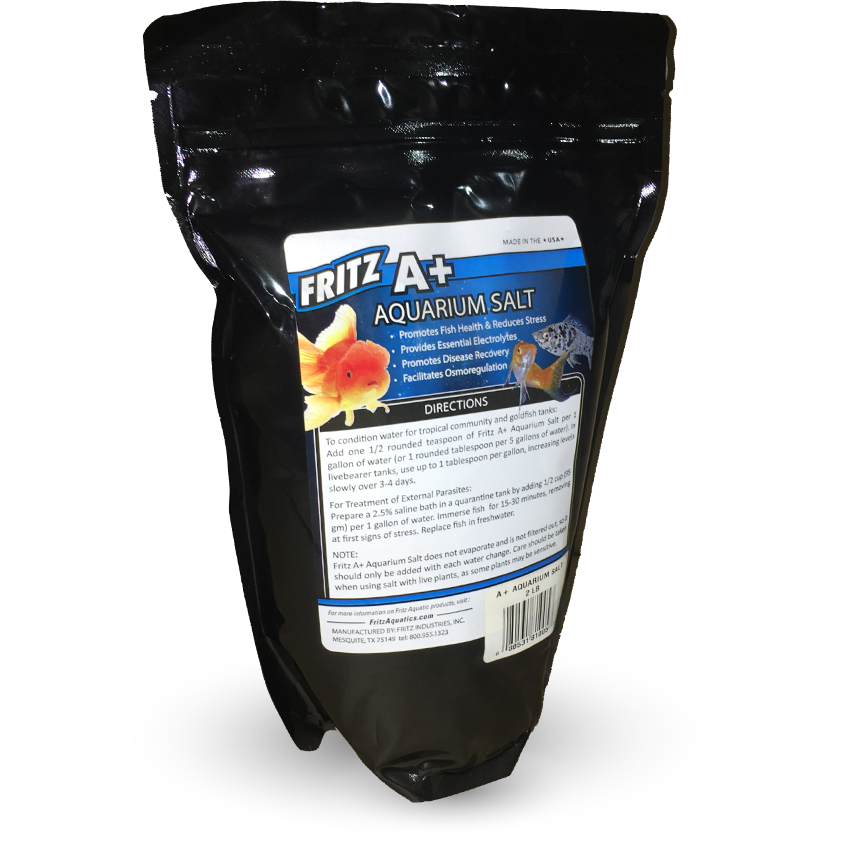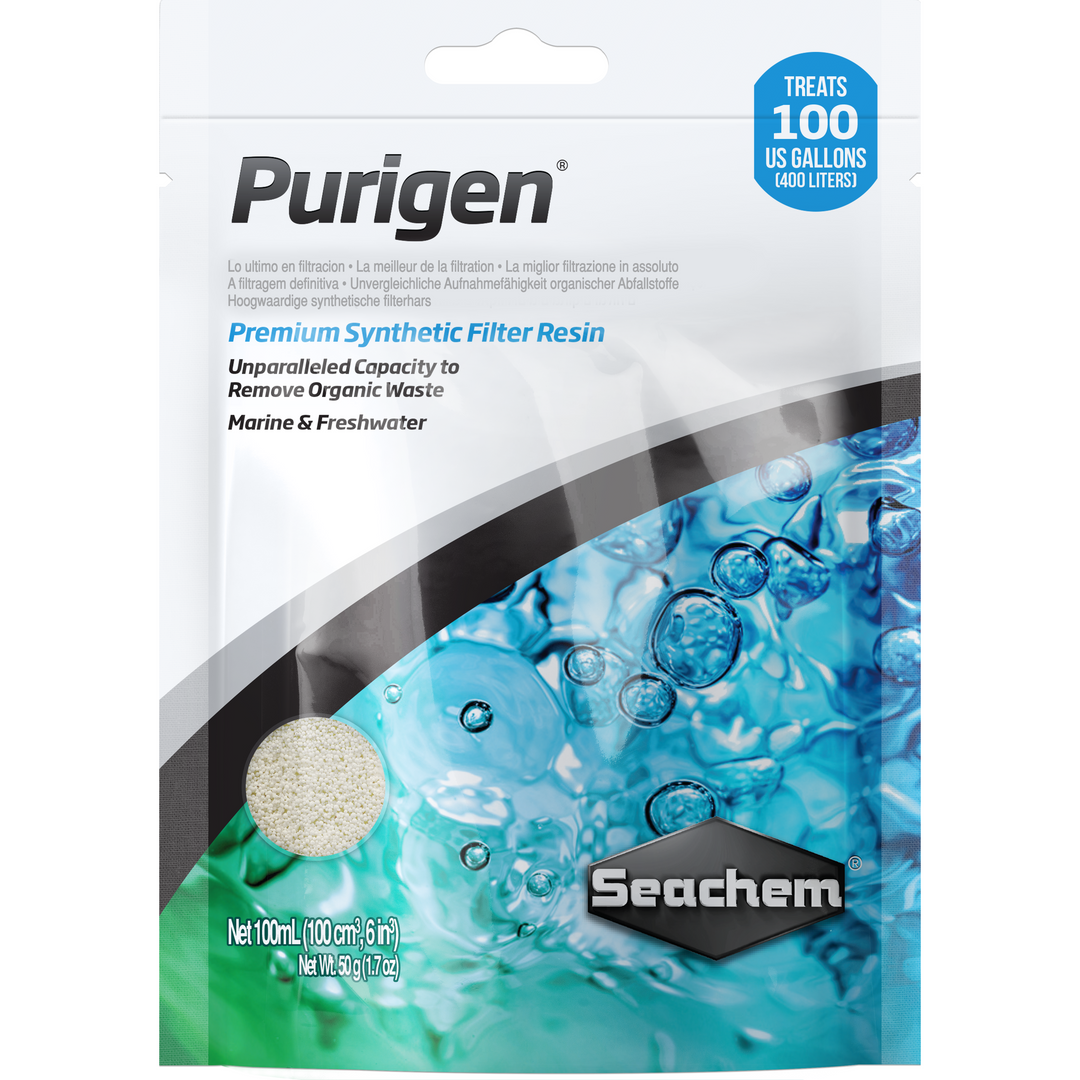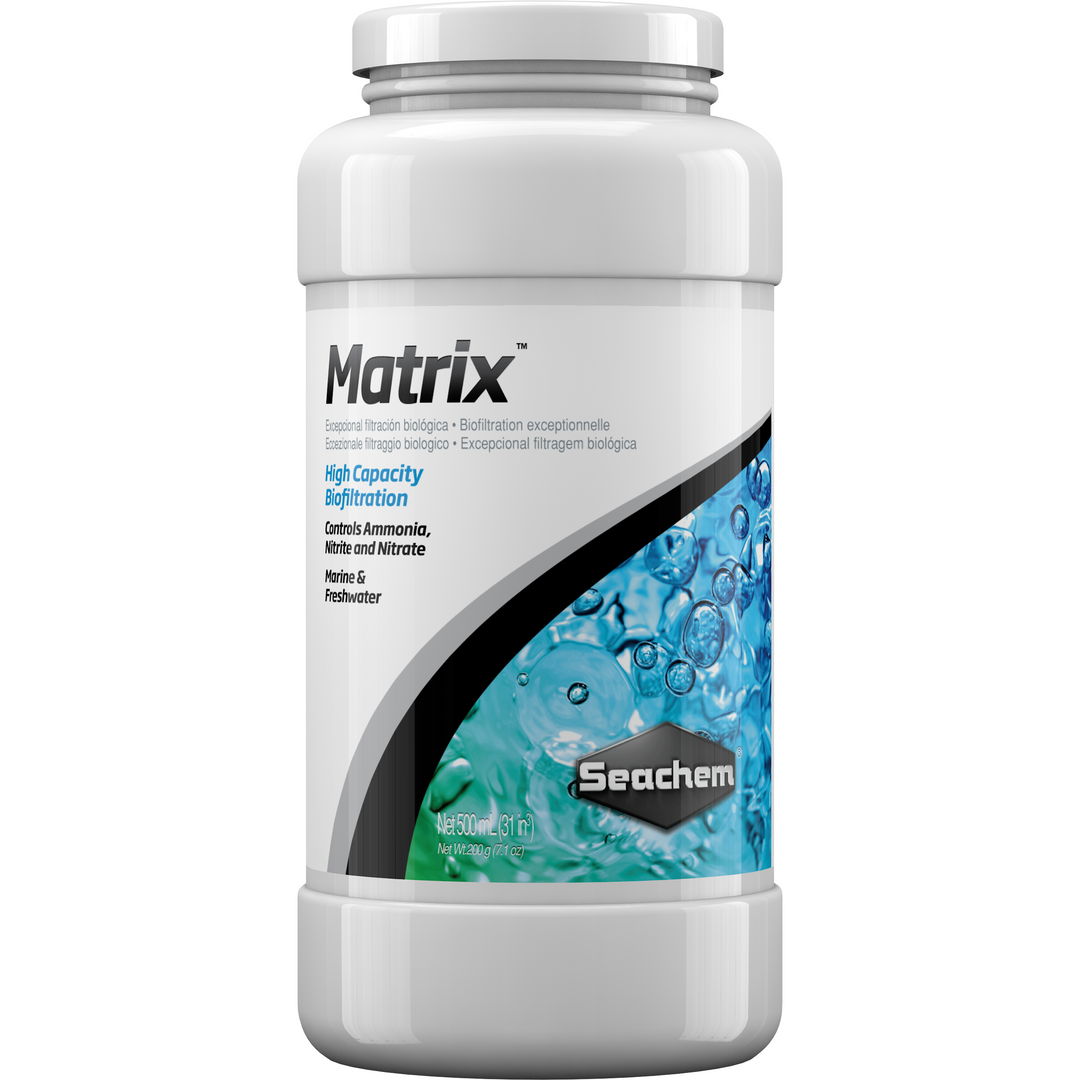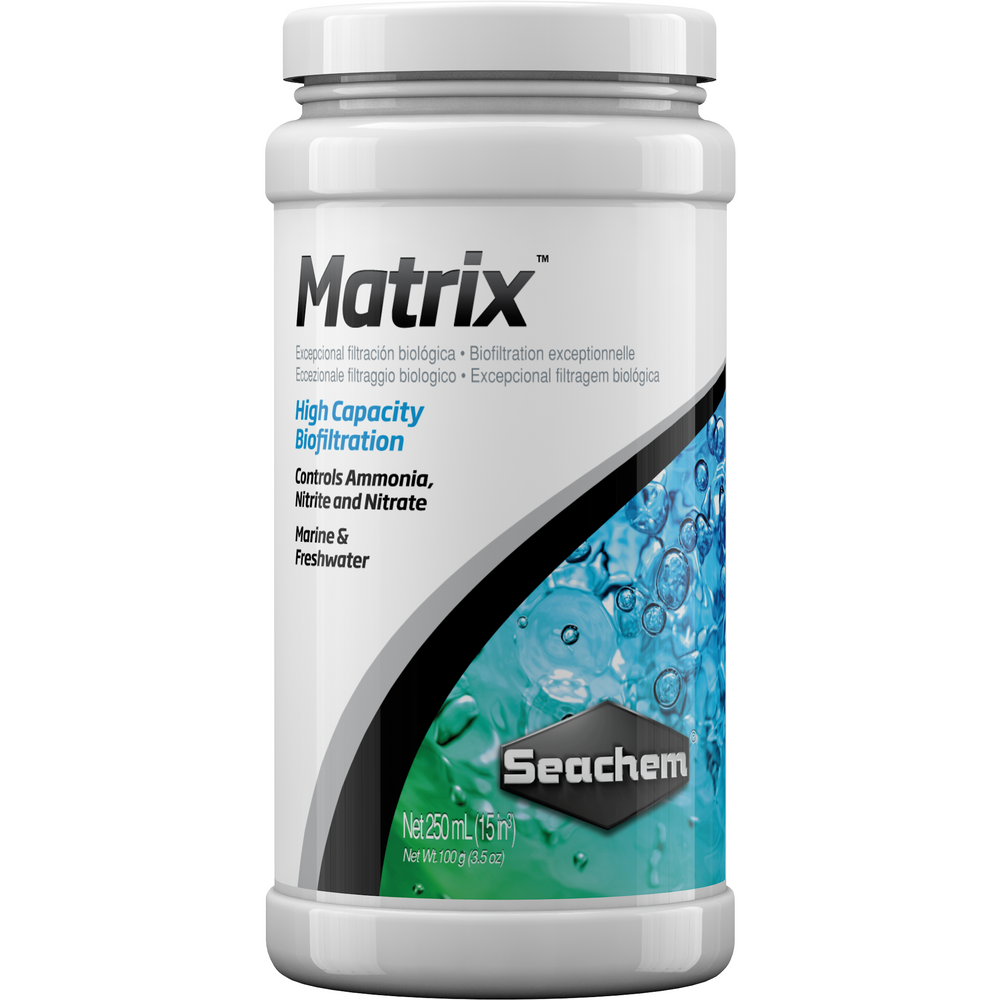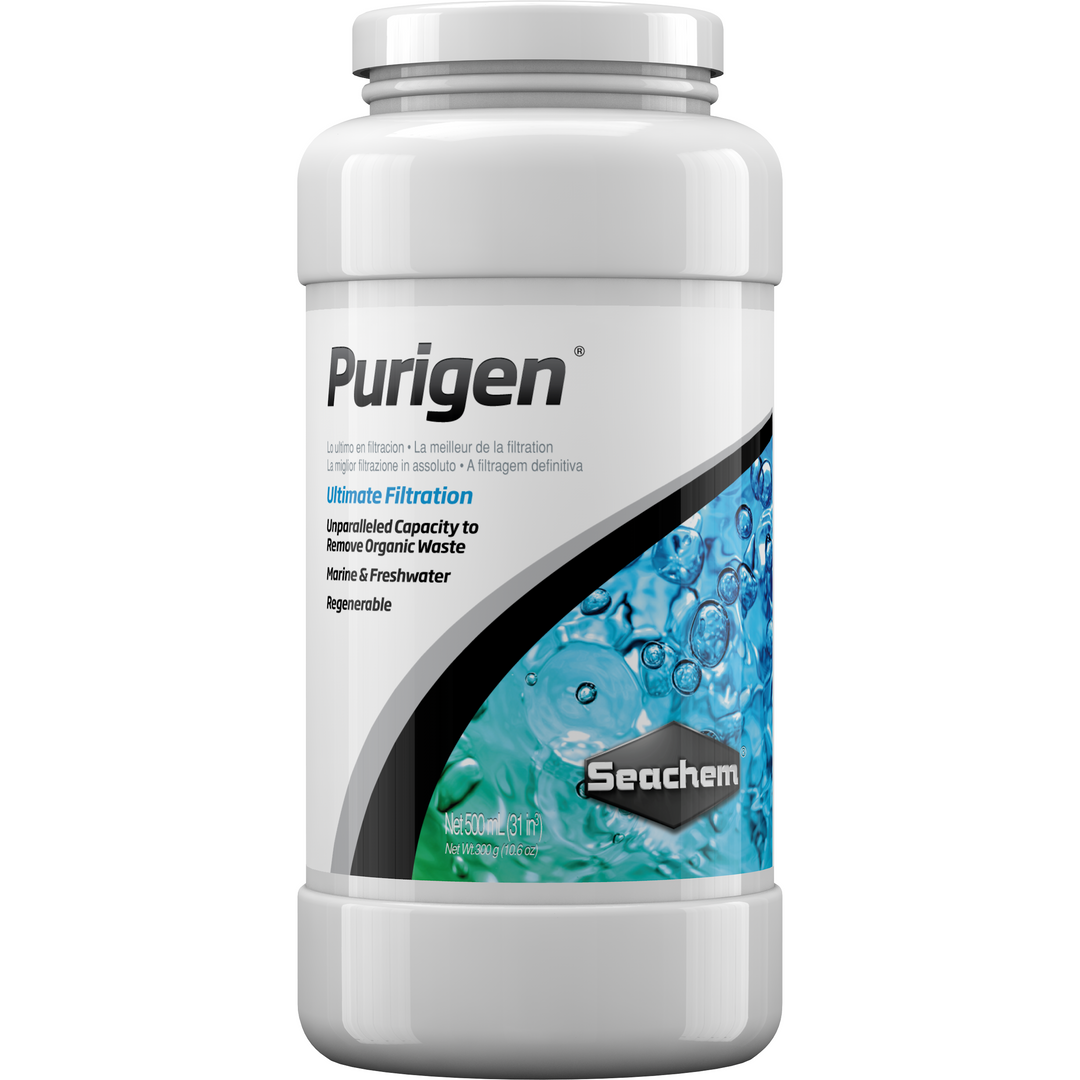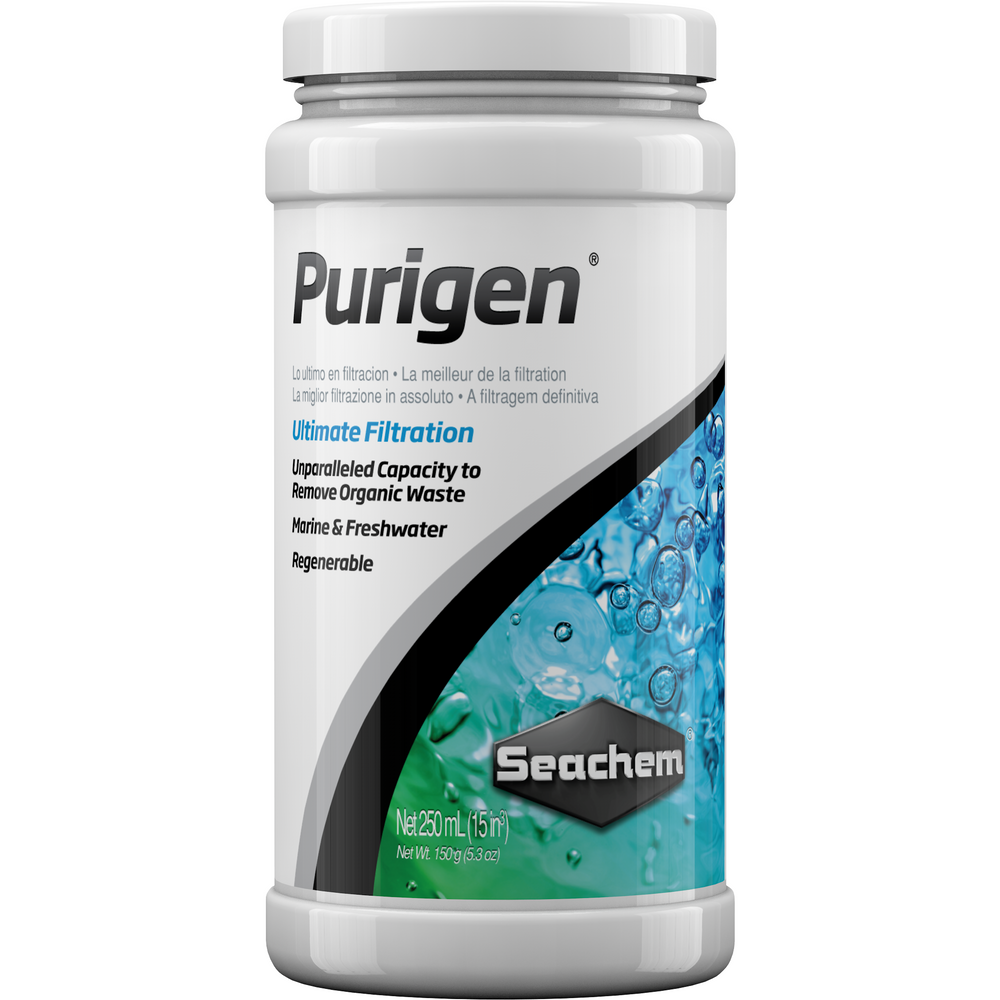About Fritz Liquid Test Kits - Master Test Kit
Fritz Aquatics Master Test Kit contains four essential test kit formulas in one convenient box.
Wide Range pH
Testing the pH of your aquarium water regularly to make proper adjustments is crucial to keep your fish, plants, and other aquarium animals healthy and stress-free. pH is the measure of acidity or basicity of liquids. Acidic water will measure between 0 and 7 pH, while basic, or alkaline, water will measure between 7 and 14. Knowing your animals is important: the preferred pH range of each species in your aquarium can vary.
A consistent pH reading is more ideal than frequent changes up or down. pH is influenced in the aquarium by many factors, including the KH content, respiration, organic waste decomposition, even the ammonia cycle. Because of this, frequent testing is recommended. Established systems should be tested once a month, and new systems or aquariums with fish illness or death should be monitored more often. Establishing a baseline pH of your aquarium throughout your normal routine will help alert you to problems early on. Any unexpected pH change can indicate water quality issues and should be addressed right away.
Ammonia
Ammonia is one of the most important parameters to monitor in aquariums because any amount can be toxic to livestock if it is not addressed right away. Ammonia is commonly elevated in new tanks while establishing the beneficial biological filter. High ammonia can also be present in established aquariums from lack of maintenance, overstocking, or when the bio filter has been interrupted by medication. Ammonia can reach lethal levels very rapidly, and should be tested immediately in the case of fish illness or death. Monitor ammonia levels closely when using any medications or treatments.
The ammonia level in any tank should ideally always be at 0 ppm. Symptoms for acute and chronic ammonia poisoning include: heavy breathing and gasping at surface, clamped fins, discoloration, increased occurrence of disease, death.
Nitrite
Nitrite is produced continually during the ammonia cycle by nitrifying bacteria in the biological filter. While not as immediately toxic as ammonia, any accumulation of nitrite should still be addressed as soon as possible. The nitrite level will eventually be broken down to non-toxic nitrate. Regular testing for nitrite is recommended - chronic exposure to even low levels of nitrite can cause brown blood disease in fish, which can cause suffocation and death.
With the exception of a system establishing a biological filter and progressing through the nitrogen cycle, the nitrite level in any tank should ideally be zero.
Nitrate
Nitrate is considered the non-toxic end product of the ammonia cycle. While not directly a problem for fish at low levels, excess nitrates can cause stress and other water quality issues. Nitrate is continually produced as fish respire and released waste products move through the ammonia cycle, and can accumulate rapidly if not properly maintained. The nitrate level should be monitored regularly and routine maintenance is needed to keep concentrations low for a healthy aquarium. High levels of nitrate can also contribute to undesirable algae growth.
Directions & Dosage
To remove childproof safety cap, push down while turning. DO NOT allow Test Solutions to get into aquarium.
Wide Range pH
- Fill a clean test tube with 5 ml of water to be tested (to the line on the tube).
- Add 3 drops of pH Reagent, holding dropper bottle upside down in a completely vertical position to ensure uniformity of drops added to the water sample.
- Cap the test tube and gently shake several times to mix solution. Attention! Always use the cap. Avoid skin contact as this may affect the test results.
- Immediately match the color of the solution against those on the pH chart to determine pH. Be aware that freshwater and saltwater results are different so ensure you are reading correct result.
For best results the tube should be viewed against the white area beside the color chart in a well-lit area with a light source behind you. The closest match indicates the pH in the water sample. Rinse the test tube with clean water after each use.
Corrective actions:
- To raise pH, use Fritz pH Higher or Fritz pH Neutralizer. To lower pH, use Fritz pH Lower or Fritz pH Neutralizer. Always limit any changes in pH to 0.2 units per day when fish are present in the water being treated.
Ammonia
- Fill a clean test tube with 5 ml of water to be tested (to the line on the tube).
- Add 8 drops from Ammonia Test Solution Bottle #1, holding dropper bottle upside down in a completely vertical position to ensure uniformity of drops added to the water sample.
- Add 8 drops from Ammonia Test Solution Bottle #2, holding dropper bottle upside down in a completely vertical position to ensure uniformity of drops to the water sample.
- Cap the test tube and shake for 5 seconds.
- Wait five minutes for the color to develop.
Read the test results by matching the color of the solution against those on the appropriate Ammonia Test Color Chart included in the box. Be aware Freshwater and Saltwater results vary slightly.
Corrective actions:
- Up to 0.5 ppm - reduce feeding, remove excess detritus and debris, add all-in-one filter media MaxOut or MaxOut Pro to reduce organics. Detoxify ammonia with Fritz ACCR or Fritz Complete. Add FritzZyme nitrifying bacteria.
- 0.5 to 1 ppm - temporarily stop feeding, perform a partial water change, add all-in-one filter media MaxOut or MaxOut Pro to reduce organics. Detoxify ammonia with Fritz ACCR or Fritz Complete. Add FritzZyme nitrifying bacteria.
- 1 to 2 ppm - Perform a significant water change (approx. 50%) and follow above steps.
- 2+ ppm - Perform a significant water change (75% or more) and follow above steps. Consult an expert to find the cause of the imbalance if the problem persists.
Nitrite
- Fill a clean test tube with 5 ml of water to be tested (to the line on the tube).
- Add 5 drops from Nitrite Test Solution, holding dropper bottle upside down in a completely vertical position to ensure uniformity of drops added to the water sample.
- Cap the test tube and gently shake several times to mix solution. Attention! Always use the cap. Avoid skin contact as this may affect the test results.
- Wait five minutes for the color to develop.
Read the test results by matching the color of the solution against those on the Nitrite Test Color Chart.
Corrective actions:
- To reduce nitrite: reduce feeding, perform partial water changes, add Fritz Complete water conditioner to neutralize any nitrite present, and add FritzZyme nitrifying bacteria.
Note: In new aquariums, the nitrogen cycle commonly stalls when phosphate is limited and nitrite stop being converted to nitrate. If nitrite levels do not reduce, check the phosphate level with a Fritz Phosphate Test Kit. Typically, the addition of a phosphate supplement, phosphate-rich fish foods, or a water change with dechlorinated tap water will allow nitrifying bacteria to resume conversion of nitrite to nitrate.
Nitrate
- Fill a clean test tube with 5 ml of water to be tested (to the line on the tube).
- Add 10 drops from Nitrate Test Solution Bottle #1, holding dropper bottle upside down in a completely vertical position to ensure uniformity of drops added to the water sample.
- Cap the test tube and gently shake several times to mix solution. Attention! Always use the cap. Avoid skin contact as this may affect the test results.
- Vigorously shake the Nitrate Test Solution Bottle #2 for at least 30 seconds. This step is extremely important to ensure accuracy of test results.
- Add 10 drops from Nitrate Test Solution Bottle #2, holding dropper bottle upside down in a completely vertical position to ensure uniformity of drops to the water sample.
- Cap the test tube and shake for one minute. This step is extremely important to ensure accuracy of test results.
- Wait five minutes for the color to develop.
Read the test results by matching the color of the solution against those on the Nitrate Test Color Chart.
Corrective actions:
- To reduce nitrate: perform partial water changes, add MaxOut or MaxOut pro all-in-one filter media, add FritzZyme Turbo Clean natural organic sludge remover.


